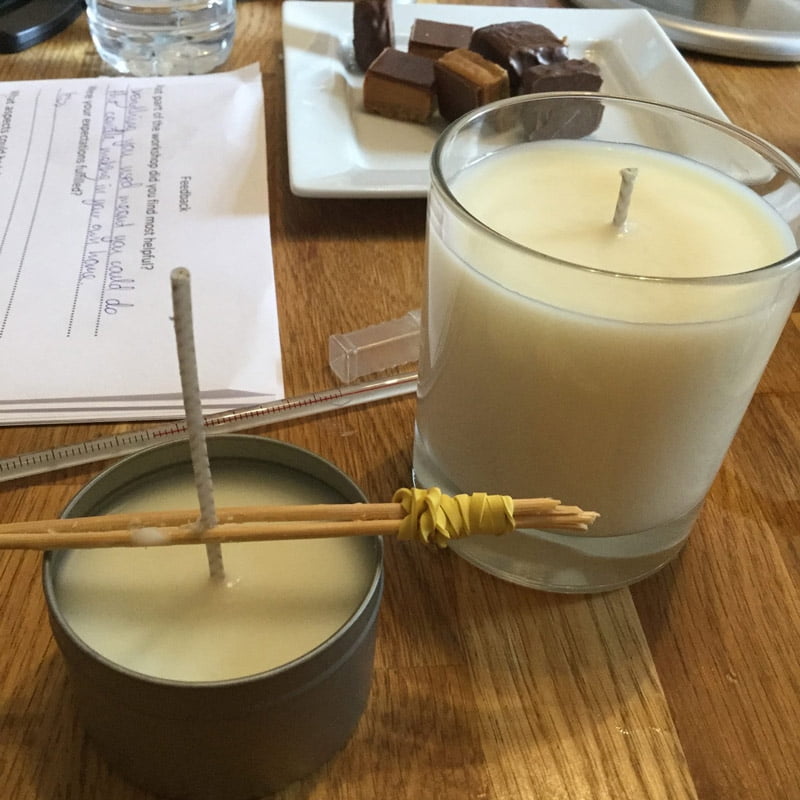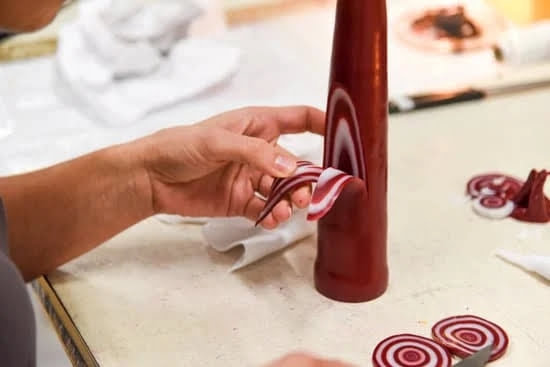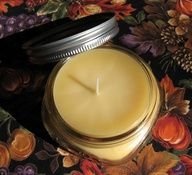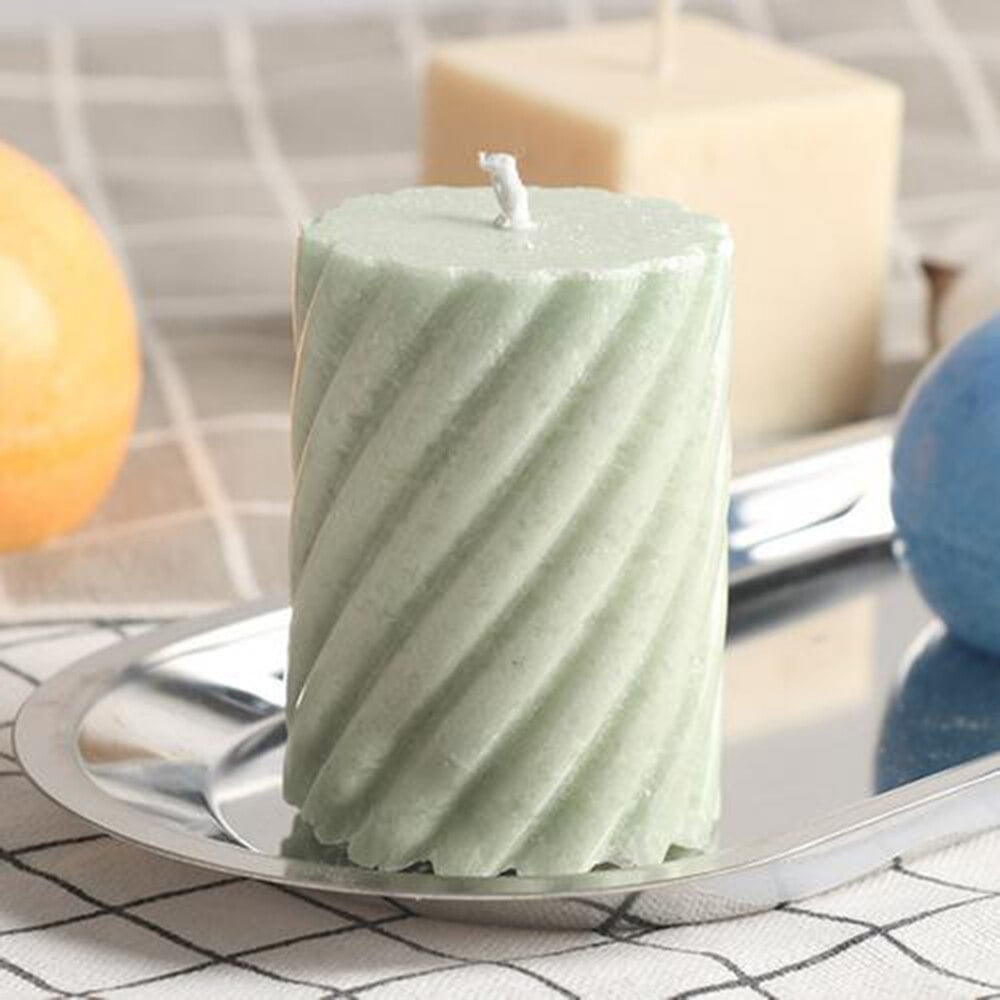Candle making is an art form that requires precise measurement and careful attention to detail. One crucial aspect of this craft is temperature control. From achieving optimal fragrance throw to ensuring an even burn and smooth texture, monitoring and controlling the temperature throughout the candle making process is essential.
But do you really need a thermometer for candle making? In this article, we will explore the importance of temperature control in candle making and discuss whether a thermometer is a necessary tool for this captivating hobby.
Temperature plays a fundamental role in the final outcome of candles. When wax is heated to the right temperature, it melts evenly, allowing fragrance oils or dyes to disperse effectively. If the wax is too hot or too cold, it can affect the scent throw of the candle or result in uneven melting, leading to tunneling or wasted wax.
Furthermore, different techniques used in candle making require specific temperature ranges for success. Whether you are creating container candles or delicate pillar candles, maintaining optimal temperatures during each stage of the process ensures consistent quality and performance.
One tool that can assist in achieving proper temperature control is a thermometer specifically designed for candle making. Thermometers designed for this purpose offer accuracy and precision, allowing you to monitor temperatures with confidence. There are different types of thermometers available on the market, each with their own features and pros and cons. In the forthcoming sections, we will discuss these thermometers in detail and recommend which one might be best suited for your candle making needs.
Types of Thermometers Suitable for Candle Making
There are several types of thermometers available on the market that are suitable for candle making. Each type has its own features, pros, and cons, so it’s important to choose the right one for your needs.
One common type of thermometer used in candle making is a digital thermometer. These thermometers provide accurate temperature readings and are often equipped with a probe that can be inserted into the wax to measure its temperature. Digital thermometers usually have a digital display that makes it easy to read and monitor the temperature during the candle making process. They are also relatively affordable and widely available.
Another option is a glass or mercury-filled thermometer. These traditional thermometers consist of a glass tube filled with mercury or an alcohol-based liquid that expands when heated and rises up the tube, indicating the temperature. Glass thermometers are easy to use and offer precise readings, but they may take longer to register changes in temperature compared to digital options.
Infrared thermometers are another choice for monitoring temperature in candle making. These non-contact thermometers work by measuring the infrared radiation emitted by an object to determine its surface temperature. Infrared thermometers can be especially useful when working with hot wax, as they allow you to get an accurate reading without having to make direct contact with the wax.
When choosing a thermometer for candle making, consider factors such as accuracy, ease of use, and durability. It’s also essential to check whether the thermometer has a suitable temperature range for candle making purposes.
Based on these considerations, digital thermometers are generally recommended as they provide quick and accurate readings while being easy to use. However, personal preferences and budget constraints may influence your decision. Ultimately, finding a thermometer that suits your needs and helps ensure proper temperature control during candle making is crucial for achieving consistent results.
Understanding Different Candle Making Techniques
When it comes to candle making, there are several techniques that crafters can choose from. Each technique requires different temperature control methods to achieve optimal results. Understanding these techniques and how temperature control plays a role in each one is essential for successful candle making.
One common technique is container candle making, where the wax is poured into a container, such as a jar or tin, with a wick inserted in the center. In this technique, temperature control is important during the melting and pouring stages of the process. The wax needs to be melted to a specific temperature range before it is poured into the containers, ensuring that it adheres properly and results in an even burn.
Pillar candle making is another popular technique where candles are made by pouring melted wax into molds with removable cores. These molds can have intricate designs or be simple and cylindrical. Temperature control is crucial in pillar candle making as well. The melted wax needs to reach the right temperature for proper adherence to the mold and core, allowing for clean release once cooled.
In addition to container and pillar candle making, other techniques include taper candle making, votive candle making, and soy wax melts. Each technique has its own unique temperature requirements for successful results.
To assist in temperature management during each technique, using a thermometer becomes invaluable. A thermometer allows candle makers to monitor and adjust temperatures accurately at each stage of the process, thereby ensuring consistent quality candles. Whether it’s achieving the right pour temperature or monitoring cooling temperatures before adding fragrance oils or additives like colorants – having precise control over temperatures greatly contributes to superior end products.
| Technique | Temperature Control Considerations |
|---|---|
| Container Candle Making | Melting temperature for proper adherence |
| Pillar Candle Making | Temperature for mold and core adherence |
| Taper Candle Making | Temperature for achieving proper shape and smooth finish |
| Votive Candle Making | Melting temperature for consistent burn time |
| Soy Wax Melts | Cooling temperature before adding fragrance oils or additives |
Using a thermometer is not only convenient but also allows makers to troubleshoot any temperature-related issues that may arise. With proper temperature control, crafters can achieve their desired candle qualities such as even burn, optimal fragrance throw, and smooth texture.
Step-by-Step Guide
Container candles are a popular choice among candle makers due to their convenience and versatility. To ensure successful container candle making, it is crucial to have proper temperature control throughout the process. Using a thermometer can greatly assist in achieving the desired results. Here is a step-by-step guide on how to use a thermometer specifically for container candle making.
1. Preparing the Wax:
Before melting your wax, it is important to determine the optimal pouring temperature for your specific wax type. Consult the manufacturer’s guidelines or previous experience to find this information. Set your thermometer aside for now.
2. Melting the Wax:
Place your double boiler or melting pot on a heat source and add your wax pieces or flakes into it. Stir occasionally with a heat-resistant utensil until all the wax has completely melted and reaches the desired pouring temperature.
3. Monitoring Temperature:
Once the wax has melted, insert your thermometer into the liquid wax, ensuring that the bulb is submerged but not touching the bottom of the pot. Monitor its temperature closely and make note of any fluctuations.
4. Fragrance Addition:
Once your wax has reached the appropriate pouring temperature, remove it from direct heat and allow it to cool slightly before adding fragrance oils or essential oils. Typically, fragrance oils should be added when the wax temperature is around 180-185°F (82-85°C).
5. Cooling:
After adding fragrance, stir gently but thoroughly to incorporate it evenly throughout the wax. Continue monitoring the temperature as you let the wax cool down gradually to approximately 130-140°F (54-60°C) before pouring into your containers.
6. Pouring:
When your wax has reached the desired pouring temperature, carefully pour it into your pre-warmed containers, taking care not to introduce any air bubbles or disturb any wicks that may be present.
Using a thermometer during container candle making ensures that you maintain precise control over temperatures at each stage, resulting in consistent and high-quality candles. Remember to clean your thermometer after each use and handle it with care to prolong its lifespan.
By following this step-by-step guide and using a reliable thermometer, you can achieve optimal temperature control throughout the container candle making process, resulting in beautiful, evenly burning candles with excellent fragrance throw and texture.
Exploring the Benefits of Using a Thermometer in Candle Making
One of the key benefits of using a thermometer in candle making is the improved consistency in quality and performance of the candles. Temperature plays a critical role in achieving optimal fragrance throw, even burn, and smooth texture in candles. By accurately monitoring and controlling the temperature throughout the candle making process, candle makers can ensure that their candles turn out exactly as intended.
By using a thermometer, candle makers can prevent common issues that arise during the candle making process. For example, “tunneling” is a problem where the wax burns down the center of the candle, leaving unmelted wax around the edges.
This can be caused by pouring wax into a container that is too cold or not heating it to its proper melting point. By using a thermometer to monitor and adjust the temperature of both the wax and container, candle makers can avoid this issue altogether.
Another benefit of using a thermometer is avoiding problems like “frosting,” which is when white crystallized spots appear on the surface of candles. Frosting occurs when there are drastic temperature changes during cooling or hardening processes. By closely monitoring the temperature with a thermometer, candle makers can ensure that these temperature fluctuations are minimized and reduce the likelihood of frosting occurring.
Overall, using a thermometer in candle making provides greater control over temperature and helps maintain consistency in quality and performance. It allows for adjustments to be made at various stages of the process to achieve desired results. Whether you are an experienced candle maker or just starting out, having a reliable thermometer as part of your candle making toolkit can greatly enhance your success rates and make your candles stand out from others on the market.
| Benefit |
|---|
| Improved consistency in quality and performance |
| Prevention of common issues such as tunneling or frosting |
| Greater control over temperature |
Troubleshooting
Candle making, like any craft, can come with its fair share of challenges. From issues with tunneling to concerns over frosting, candle makers often find themselves troubleshooting unexpected problems during the process. One valuable tool in identifying and resolving these problems is a thermometer. In this section, we will explore how a thermometer can aid in troubleshooting candle making issues and provide examples of temperature-related problems and their solutions.
The Role of Temperature in Candle Making Problems
Temperature plays a crucial role in various aspects of the candle making process. When the temperature is not properly controlled, certain problems can arise that affect the overall quality and performance of the candles.
For example, if the wax is poured at too high a temperature, it may result in uneven cooling and cause cracking or shrinkage. On the other hand, if the wax is poured at too low a temperature, it may lead to poor scent throw or incomplete filling of molds.
A thermometer helps identify temperature-related issues by providing accurate measurements throughout different stages of candle making. By monitoring and adjusting the temperature accordingly, candle makers can prevent or resolve these problems effectively. Let’s take a look at some common candle making issues and how a thermometer can assist in troubleshooting them.
Examples of Temperature-Related Candle Making Problems
- Tunneling: Tunneling refers to when an unsightly hole forms down the center of a container candle while burning, leaving wasted wax along the edges. This issue often occurs when the initial pour was done at too low a temperature or when subsequent pours were done without melting away any residue on the sides. By using a thermometer to ensure proper pouring temperatures and complete melting between pours, tunneling can be minimized or eliminated.
- Frosting: Frosting refers to streaks or patches on candles’ surfaces that resemble frost crystals. It happens when the wax cools too quickly during the solidification process. By monitoring the temperature with a thermometer, candle makers can control the cooling rate and reduce frosting by ensuring a slow, gradual cool-down.
- Scent Throw Issues: The fragrance throw of a candle is its ability to emit a pleasant scent when burned. Achieving optimal scent throw requires precise temperature control during the fragrance addition stage. If fragrances are added at temperatures that are either too high or too low, it can negatively impact the distribution of scent in the finished candle. A thermometer can assist in determining the ideal temperature for adding fragrance oils to maximize their aroma.
By utilizing a thermometer throughout the candle making process, candle makers can troubleshoot these and other temperature-related issues more effectively and achieve better results.
Alternative Temperature Control Methods in Candle Making
While using a thermometer is the most common way to monitor and control temperature in candle making, there are alternative methods that can be used. These methods may come in handy when a thermometer is not readily available or for those who prefer different approaches to temperature control.
One alternative method is the “drip test.” This involves carefully dripping a small amount of melted wax onto a cool surface, such as a metal spoon or plate, and observing its behavior. The consistency and appearance of the cooled wax can indicate whether it has reached the desired temperature for pouring into molds or containers.
For example, if the wax hardens quickly and cracks or shrinks, it may be too cold. On the other hand, if it remains sticky and doesn’t solidify properly, it might be too hot.
Another option for temperature control in candle making is using visual cues. Experienced candle makers often rely on observing changes in the appearance of melted wax to determine its readiness.
For example, when making container candles, they may look for a thin film called “skin” forming on top of the molten wax as an indication that it is close to the desired pouring temperature. Similarly, when making pillar candles, they may observe the surface of the wax becoming smooth and glossy before pouring it into molds.
Lastly, some candle makers rely on their sense of touch to assess temperature without using a thermometer. By carefully touching the sides or bottom of a melting container with their fingertips, they can get a sense of how hot or cool the wax is. This method requires experience and caution to prevent burns since accurate judgment relies heavily on subjective interpretation.
It’s important to note that while these alternative methods can be useful in certain situations, they may not provide as precise or consistent results as using a thermometer. Thermometers offer more accuracy and reliability in measuring temperatures which is crucial for achieving consistent outcomes in candle making endeavors.
Overall, whether or not to use a thermometer in candle making is ultimately a personal decision. Some beginners and hobbyists may find alternative methods sufficient for their needs, while professionals and those striving for perfection may prefer the precision that thermometers offer. It’s important to consider the specific requirements of your candle making process and choose the method that best suits your preferences and experience level.
Expert Advice
When it comes to candle making, temperature control plays a vital role in achieving the desired results. While using a thermometer is highly recommended, there are instances where you may need to rely on other methods for monitoring and controlling the temperature. In this section, we will explore some expert advice on how to achieve proper temperature control without a thermometer.
Visual Cues
One of the most common methods used by experienced candle makers is relying on visual cues to determine the temperature of their wax. By observing the appearance and behavior of the wax, you can make informed decisions about when to proceed with various steps in the candle making process. For example:
- When melting wax, keep an eye out for signs that indicate it has reached the ideal temperature for fragrance oil addition, such as seeing a thin layer forming on top of your melted wax.
- To avoid overheating or affecting fragrance throw negatively, watch for any smoke or sizzling sounds coming from the wax while pouring it into containers.
Using Ice Water Test
Another reliable method is conducting an ice water test to gauge the temperature of your melted wax. This involves carefully pouring a small amount of melted wax into a glass of ice water and observing how quickly it solidifies. The rate at which the wax solidifies can give you an indication of its approximate temperature.
Experience-based Judgement
With time and practice, experienced candle makers develop an intuitive understanding of their materials and techniques. They are often able to estimate temperatures based on personal experience and familiarity with specific waxes or recipes. This approach requires careful observation and experimentation but can be highly effective once mastered.
It’s important to note that while these methods can provide valuable insights into temperature control, they do come with certain limitations compared to using a thermometer. Visual cues and experience-based judgement may not provide as precise measurements as thermometers and can be more susceptible to human error. Additionally, they may not be suitable for beginners or when working with sensitive recipes that require precise temperature management.
Ultimately, the decision of whether to use a thermometer or rely on alternative methods for temperature control in candle making depends on your personal preferences and experience level. Novice candle makers may benefit from using a thermometer initially to gain a better understanding of the process, while experienced candle makers may feel more confident in their ability to assess temperature without one.
Conclusion
In conclusion, the use of a thermometer in candle making can greatly enhance the success and quality of your candles. Temperature control is essential in achieving optimal fragrance throw, even burn, and a smooth texture in candles. By monitoring the temperature throughout the candle making process, you can ensure consistency in your results and avoid common issues such as tunneling or frosting.
When it comes to choosing a thermometer for candle making, there are several options available. From digital thermometers to infrared thermometers, each type has its own features and advantages. It is recommended to choose a thermometer that is specifically designed for candle making to ensure accurate readings and ease of use.
Throughout this article, we have explored various candle making techniques and how temperature control varies depending on the method used. Regardless of the technique, a thermometer can be an invaluable tool in managing temperatures during each stage of the process. Whether you are creating container candles or pillar candles, knowing the ideal temperature ranges and being able to make precise adjustments will result in consistent and high-quality finished products.
While using a thermometer may not be absolutely necessary for every candle maker, it certainly offers numerous benefits that cannot be ignored. Improved consistency in candle quality and performance, along with the ability to troubleshoot temperature-related issues more effectively, make using a thermometer highly advantageous. However, for experienced candle makers who have developed strong instincts and visual cues for assessing temperature, alternative methods may also be considered.
Ultimately, whether or not you need a thermometer for candle making depends on your individual preferences and experience level. If you are just starting out or striving for consistently excellent results, investing in a reliable thermometer is highly recommended.
On the other hand, if you have developed other effective ways to monitor temperature or rely on your intuition and experience when it comes to temperature control in candle making, then using a thermometer may be optional. The decision ultimately lies with you as the candle maker.
Frequently Asked Questions
What type of thermometer do you need for candle making?
The type of thermometer that is commonly used for candle making is a candy thermometer. A candy thermometer is designed to measure high temperatures accurately, making it suitable for the process of melting and heating wax.
It usually has a long probe with an attached clip that allows it to be securely attached to the side of the pot or container while the wax is being heated. Additionally, a candy thermometer typically has a wide temperature range, often going up to 400 degrees Fahrenheit or more, which is necessary for monitoring the various stages of candle making.
Why is thermometer important in candle making?
A thermometer plays a crucial role in candle making because it ensures that the wax reaches and maintains the correct temperature throughout the entire process. Different types of waxes have specific melting points and pouring temperatures, which need to be closely monitored and controlled in order to achieve quality candles. If the wax is too hot when fragrances or dyes are added, it can cause them to evaporate or burn off, resulting in weak scents or discolored candles.
Similarly, if the wax cools too quickly during pouring, it may create uneven surfaces or cause sinkholes in the finished product. By using a thermometer accurately, candle makers can achieve consistent results and produce candles that burn evenly and have desirable characteristics.
Can you use a food thermometer for candle making?
While it might be tempting to use a food thermometer as an alternative for candle making, it is generally not recommended due to several reasons. Food thermometers are designed specifically for measuring temperatures in food items and typically have lower temperature ranges compared to candy thermometers used for candle making. This means they may not accurately measure higher temperatures reached during wax melting or pouring stages.
Additionally, food thermometers may not have long probes with clips designed for secure attachment to containers – a key feature essential for safe measurement when dealing with hot liquids like melted wax. For accurate results and safety reasons, it’s best to use a thermometer specifically made for candle making purposes rather than repurposing a food thermometer.

Welcome to my candle making blog! In this blog, I will be sharing my tips and tricks for making candles. I will also be sharing some of my favorite recipes.





